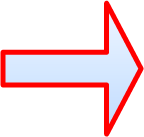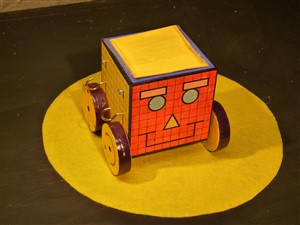Cube: A cube is a solid object that has six identical square faces.
Making Your First Cube

A fun assignment I gave my students each year was to invent, design and make a math game that would teach grade one students math skills such as adding and subtracting.
In the beginning of the school year the student in the photo made a cube. She took her cube home and saved it. Later, when she had to make the game, she brought it back to school, designed and made a dice. Great idea! Now it's your turn to make a cube.
In the beginning of the school year the student in the photo made a cube. She took her cube home and saved it. Later, when she had to make the game, she brought it back to school, designed and made a dice. Great idea! Now it's your turn to make a cube.




One Decimeter
A
B
C
D





How to Make a Cube
Focus on the four blue lines that cross over each other at the little 0. These are called intersecting lines.
These intersecting lines form a polygon. The distance from A to B is equal to the distance from B to C.
The angle D is a ninety degree angle This angle is also called a right angle. The four polygon sides are at right angle to each other. The four sides are the the same linear length.The polygon is a square.
These intersecting lines form a polygon. The distance from A to B is equal to the distance from B to C.
The angle D is a ninety degree angle This angle is also called a right angle. The four polygon sides are at right angle to each other. The four sides are the the same linear length.The polygon is a square.
The Square Decimeter
Focus, on the dark area. It's a little bit bigger than the size of a piece of sliced cheese. Use your eyes and brain to visualize and connect.
Look again at the plan. Think. Do I know more? Yes, the distance between two parallel lines is one decimeter. The linear length and width of this polygon is a decimeter. The symbol for a decimeter is dm.
Look again at the plan. Think. Do I know more? Yes, the distance between two parallel lines is one decimeter. The linear length and width of this polygon is a decimeter. The symbol for a decimeter is dm.




Let's Make a Cube
The first cube that you will construct will have a volume of one cubic decimeter. The cubic decimeter is the anchor of the metric system.
To be a great math student you need to know everything about the cubic decimeter. It's time to make one.
Concentrate on the horizontal Cheerios cereal box. There are three square decimeter templates resting across the bottom. The one on the left is made out of thin plywood, the middle one is made from boxboard and my favourite on the right is made from acrylic plastic.
I had 15, square decimeter templates in my classroom. My students used them all the time. Ask an adult to make you one. It will be an important measuring tool for you in the future.
dm²
dm²
dm²

Cardboard, a Building Material
I'll be using cardboard to construct this project but I noticed that when I went to reclaim some material from my cardboard container , the box was overflowing. Time to cull the container and recycle.




To cull the container I dumped the box on my workbench. I retrieved my household recycling container. Then I culled the material.

Choosing a Good Piece of Cardboard



Sorting through the box of cardboard did not take long. When I completed my task I felt organized, ready to work, and in doing this task, I found a piece of cardboard. Now I can start my cube.
The cardboard was in good condition and as you can tell by the above photo, a little larger then my one square decimeter template.
I also noticed that one of the corners looked like it was a right angle. I used my right angle plastic triangle to check it out, and it was. The square decimeter also proved it.
I had two sides at a right angle to each other. I aligned and placed my template precisely in the corner. Holding the template in position, I traced around the other two sides. It will save me time.
The cardboard was in good condition and as you can tell by the above photo, a little larger then my one square decimeter template.
I also noticed that one of the corners looked like it was a right angle. I used my right angle plastic triangle to check it out, and it was. The square decimeter also proved it.
I had two sides at a right angle to each other. I aligned and placed my template precisely in the corner. Holding the template in position, I traced around the other two sides. It will save me time.

Removing the square decimeter template, I placed the cardboard on a cutting jig. I aligned the red vertical intersecting line with the jig's slot and I used my left hand in a firm downward pressure to hold the cardboard in position. I then carefully cut the line with a canary knife.
After completing the first cut, I repeated the action for the second red intersecting line. I now had a square decimeter made from reused cardboard. Five more to go.
I used a canary knife to cut the cardboard but there are other cutting methods.
After completing the first cut, I repeated the action for the second red intersecting line. I now had a square decimeter made from reused cardboard. Five more to go.
I used a canary knife to cut the cardboard but there are other cutting methods.

Focus on the 1dm X 1dm template. It rest on the 17cm X 17cm piece of cardboard. Also note that it is aligned with the bottom right side corner.
Measuring
Action
Five More Sides

Time to dismantle a box by cutting down one edge with my canary knife.
I laid the cardboard on my bench and cut a large piece. Using my template and a ruler, I measured and drew three vertical and two horizontal intersecting lines one decimeter apart.
I placed the cardboard on a cutting jig, held the cardboard firmly and cut six more pieces. That left me with an extra piece.
I chose the six best pieces and prepared to tape the sides together.
I laid the cardboard on my bench and cut a large piece. Using my template and a ruler, I measured and drew three vertical and two horizontal intersecting lines one decimeter apart.
I placed the cardboard on a cutting jig, held the cardboard firmly and cut six more pieces. That left me with an extra piece.
I chose the six best pieces and prepared to tape the sides together.









Time to put this cube together. To assemble the cube you will need scissors, masking tape and a 3mm spacer.
If you focus on the left side of the above photo, you will notice a large nail between the two pieces of cardboard. That is a spacer. It is there to make bending the cardboard easier.
On the right side is the masking tape sticking to a joint ready to be cut with a pair of scissors. Having a buddy do this job makes the task much easier. You can share the work.
The big photo shows how the six parts fit together in a plan.
The last small photo shows how the parts are taped together. Good Luck!
If you focus on the left side of the above photo, you will notice a large nail between the two pieces of cardboard. That is a spacer. It is there to make bending the cardboard easier.
On the right side is the masking tape sticking to a joint ready to be cut with a pair of scissors. Having a buddy do this job makes the task much easier. You can share the work.
The big photo shows how the six parts fit together in a plan.
The last small photo shows how the parts are taped together. Good Luck!
